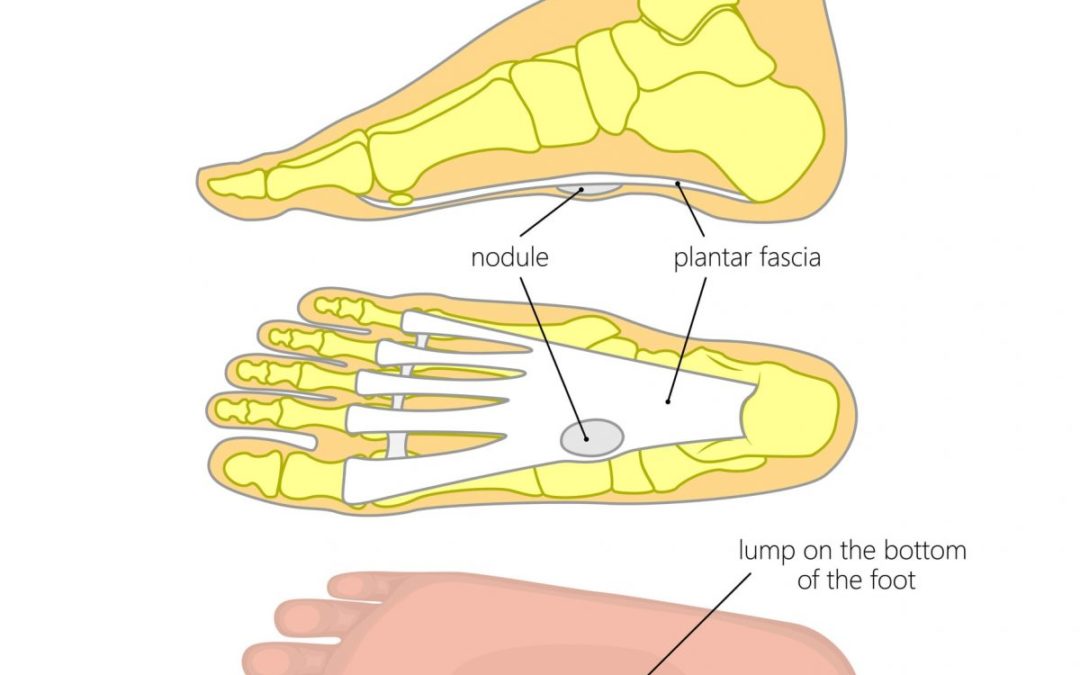What is Plantar Fibromas?
Table of Contents
A fibroma is a benign fibrous tissue tumor or growth, that can occur anywhere in the body, for example in the uterus they’re called fibroids. On the plantar, or bottom surface of the foot, they are called plantar fibromas. Unlike plantar warts, which grow on the skin, these grow deep inside on a thick fibrous band called the plantar fascia. When non-surgical measures for treating plantar fibromas, such as orthotics have failed to provide adequate relief of symptoms, surgical removal is a reasonable option. Attempts may be made to surgically remove solitary nodules (a single lump or bump) with wide excision, however there is reported to be a high incidence of recurrence. Multiple plantar fibromas generally require more extensive excision of the entire fibrous band of plantar fascia (known as a Steindler plantar fascial stripping), to insure complete removal and prevent recurrence.
Description of the Surgery
The surgical procedure involves a long, often curvilinear, incision on the bottom of the foot. The incision extends from the heel to the ball of the foot. The surgeon will dissect through the fatty tissue layer on the bottom of the foot to expose the thick fibrous plantar fascia. The plantar fascia, which includes the multiple benign fibromas, extends from the bottom of the heel, through the arch, all the way to the ball of the foot. The fascia removal requires careful separation from deeper soft tissues structures, and small nerves. Once the fascia has been removed, the bottom of the foot is stitched closed. Often a drain is placed into the surgery site to help prevent blood and other fluids from collecting here. The surgical wound is bandaged and the patient must remain non-weight bearing on the foot (with crutches) for a minimum of three weeks. Normal post-operative care including rest, ice, elevation, and maintaining a clean surgical site would be followed. The drain is usually removed 3 to 5 days after the surgery. The stitches are removed between 2 and 3 weeks after the surgery.
Post-Operative Advice
Once the incision site is well healed, the patient may begin gentle calf muscle stretching exercises, and weight bearing with a soft soled shoe. Functional foot orthotics are generally recommended to help support the arch of the foot which has been weakened by removal of the plantar fascia. Although the patient will often resume walking about 1 month after the surgery, normal activities, including sports, will usually resume about three months after the surgery. There may be some residual tenderness in the incision.
Possible Complications
Some possible complications of the surgery include infection, swelling, and numbness on the bottom of the foot. The possibility of uncomfortable scarring on the bottom of the foot may also develop if the patient walks on the foot, damaging the incision, before the incision is properly healed. As previously mentioned, recurrence of the plantar fibroma is also possible, although this becomes less likely with removal of the entire plantar fascia.Cited www.apma.org
Seeking Treatment
If you’ve been searching for podiatric surgeons for your foot and ankle needs, take time to meet with the Podiatry Group of Georgia. Our doctor has the experience and knowledge you need to help your feet and ankles feel their best. Give us a call today and set up an appointment for your initial consultation. Call us today
Call Our Marietta, Georgia Office Today at 404-806-3731 or Book your appointment online now!
Proudly Serving Marietta and Atlanta Area!

![podiatryGroup-Logo[1] Logo](https://www.podiatrygroupofgeorgia.com/wp-content/uploads/2020/07/podiatryGroup-Logo1.png)
